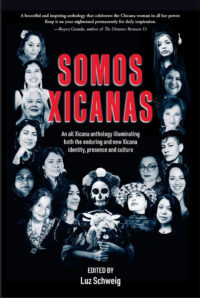Borrowing from Dr. Martin Luther King Jr.’s inspirational declaration, I have a dream for an effective, supportive, secure, and happy school environment for our community’s children. Despite setbacks of the past, I think it’s possible if we take an honest look at the student population and its needs.
The largest ethnic group of students in this district is Latino. Data from Education Data Partnership show that while the total student population has declined from 4,627 in 2012 to 4,564 in 2017, the Latino student population has increased from 2,480 in 2012 to 2,615 in 2017. The number of Latino teachers in the district in 2015 was 22. The number of white teachers for the same year was 213. No figures were available for 2016 or 2017.
We desperately need appropriately qualified teachers and leaders who reflect our student body. Statistics from the 2016 U.S. Department of Education show that the overwhelming majority of U.S. teachers are white. However, numerous studies including “Representation in the Classroom: The Effect of Own-Race Teachers on Student Achievement,” by Egalite, Kisida, and Winters, indicate that students benefit from having a race congruent teacher.
They report that when students and teachers share the same race/ethnicity, these teachers can serve as role models, mentors, advocates, or cultural translators.
My dream is for our Latino students to benefit from having more Latino teachers, and this standard can also be applied to administrators.
The search for a new permanent superintendent is underway. This person will set the tone for a district desperately in need of unification and positive forward direction. My dream is that this person will have the background that allows him/her to understand the challenges our Latino students and families face, linguistically, economically, and politically. What a genuine statement of inclusivity it would be to have a bilingual, bicultural superintendent.
I encourage the board and search committee to be culturally sensitive during this process. A national organization, Association of Latino Administrators and Superintendents, can assist with recruitment postings. Within our state, the California Association of Latino
Superintendents and Administrators is an invaluable resource for counsel on the need for race congruous leaders and how to reach those candidates.
David Verdugo, Executive Director of the California Association of Latino Superintendents and Administrators, explains the critical need for minority leaders in education:
“Latino students have lower graduation rates, higher high school drop-out rates, and few transition to our UC system. Thirty percent of Latinos drop out of high school and only 29 percent of Latino graduates complete college preparatory classes.”
Verdugo continues, “Thirty-eight percent of Latino children in California live in poverty – a far larger percentage than their non-Latino peers.”
Verdugo believes that “to change these entrenched inequalities, we need more Latino and Latina superintendents to lead our school districts. There is a growing understanding that leaders of the same background and race as their students can foster increased engagement, confidence, trust, relationships, and comfort. They understand their community, the barriers Latinos face, and many of the supports they need. “
Whether you have students attending Sonoma Valley schools or not, everyone has a stake in their success. You can express your preferred qualities for a new superintendent through a survey offered online through February 7. Go to the Sonoma Valley Unified School District website at sonomaschools.org and look for Superintendent Search to access the survey in English or Spanish.
What is your dream?




My dream is that we have the best teachers and a learning environment so our children are prepared to compete with the Chinese and others whose primary goal is to be the best in Science, Math and English the universal language of business. The notion that only people of the same ethnic heritage can teach children of the same heritage is nonsense. Give me teachers of passion and excellence whose motivation is to teach regardless of race or color or ethic heritage. I am part Ukrainian, Belgium and Dutch. So glad I was not limited to teachers of my heritage or else I may have not received the best education.
Mar. 6, 2018, 11:59 a.m.
HIGHER EDUCATION
CALIFORNIA STATE UNIVERSITY
UNIVERSITY OF CALIFORNIA
COMMUNITY COLLEGES
Teresa Watanabe
By TERESA WATANABE
California’s public college campuses are so diverse, but their faculty and leaders aren’t, a new study says
UC President Janet Napolitano, center, actively recruits students of color, but a study found an urgent need to diversify campus leaders.
UC President Janet Napolitano, center, actively recruits students of color, but a study found an urgent need to diversify campus leaders. (Mark Boster / Los Angeles Times)
California’s public colleges and universities face a “drastic disparity” in diversity between their undergraduates, who are overwhelmingly students of color, and their predominantly white faculty and campus leaders, a new study has found.
That mismatch can negatively affect student academic success and must be addressed, says the report by the Campaign for College Opportunity, a Los Angeles nonprofit.
“Our public colleges and universities have to do more than communicate that they ‘value’ diversity while tolerating its absence,” Michele Siqueiros, the nonprofit’s president, said in a statement. “We can no longer accept excuses that leave out African Americans, Latinx, Asians and women from faculty and leadership positions in our colleges and universities, especially when we know including them on our campuses is key to our students’ success.”
The report was issued Tuesday on the 50th anniversary of the East Los Angeles walkouts in which Latino students demanded better educational conditions. It is based on 2016-17 data from the University of California, California State University and California Community Colleges.
Researchers reviewed data on the racial, ethnic and gender composition of the systems’ students, faculty and leaders on campus, in central offices and on governing boards.
In some cases, the data already are dated. The study says, for instance, that UC has only one female chancellor. There are now two, after Carol Christ was named to lead UC Berkeley last year. And while Cal State had no Asian American trustees at the time the research was conducted, this week, Gov. Jerry Brown nominated Wenda Fong, a Los Angeles TV executive, to the board.
Among the study’s findings:
— In the UC system, 69% of students are Latino, African American, Asian American, Pacific Islanders, Native Hawaiians and American Indians/Alaska natives, while 70% of tenured faculty and campus senior leadership are white. Women make up more than half of UC students and are proportionally represented in the UC Office of the President, filling 57% of senior positions. But there were no Latino senior leaders in the central office as of last year. Among UC regents, 73% are men and 62% are white.
— At Cal State, 65% of undergraduates are students of color, while about 6 out of 10 tenured faculty, campus leaders and senior executives in the chancellor’s office are white. No Asian Americans served in the Cal State Chancellor’s office as of last year, but they were proportionally represented among faculty. Nearly half of the senior leaders at the 23 campuses were women.
— At the California Community Colleges, Asian Americans, Latinos and blacks made up about two-thirds of students but less than one-third of tenured faculty, governors and senior leaders in the office of Chancellor Eloy Ortiz Oakley, who is Latino. More than half of students, faculty and campus leaders were women.
The report called for a “wholesale review” of hiring, promotion and tenure practices and called on the governor to appoint more diverse governing board members.